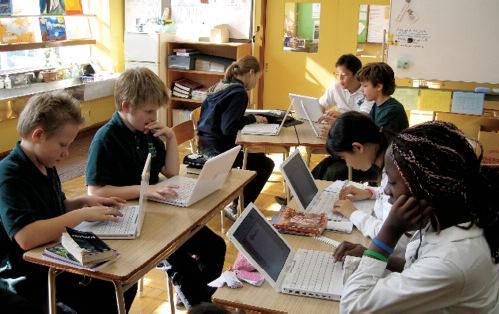Educating to Meet the Demands of the 21st Century
Education must meet the needs of today and the demands of tomorrow
By Patrick Newell
Technology, media and globalization contribute to our world changing at an alarming pace and in ways it never has done before. When our current elementary school children enter the workforce, a significant percentage of the jobs they will take have yet to be invented. Their generation are likely to change careers five times.
Our world is changing, it is becoming flatter and smaller
Factors driving today’s reality include: vast amounts of information, rapidly and readily available, increased automation, skilled and cost-effective labor in Asia which, relocates the workforce for many businesses and yet to be taken fully into consideration, global mobility. Today is an era of new industries, a more demanding workplace and the reality of global warming. This combined with social shifts, ‘family time’ at the dinner table is often replaced by digital devices and over crowded schedules.
In the past decade researchers have broadened our understanding of intelligence. ‘Multiple’, ‘emotional’ and ‘cultural’ intelligence have entered our assessment of what it means to be smart. We also understand the increasing demand for people who can design products and offer creative services that are unique and relevant in a world filled with an ever-increasing abundance of choices.
Recent brain research has raised our awareness, creating new ideas and organizing thought. It is effectively facilitated through mind mapping. Two Tokyo-based organizations specialize in training people to meet the needs of today’s corporations. The AMT Group (http://amt-group.com), shapes global thinkers using diverse methods in order to prepare corporations and organizations for the challenges of the 21st century. The New Center for Creative Arts (http://www.rbr-art.com) focuses on developing the right side of the brain.
Todays children are digital natives. Their visual cortexes are approximately 15% larger than their parents’ and are accustomed to making frequent digital decisions. Today 87% of students are visual or visual kinesthetic learners. Brain research suggests active participation in the learning process enhances the potential for emotional motivation. Project-based learning is an effective way to ‘synergize’ with the brain. Parents need to acknowledge that the most effective schooling for their children must be vastly different from their own.
21st Century schools: Rewiring brains for inquiry
It is mandatory that schools evolve to serve their students. Education must reflect and keep pace with both societal and technological changes. Schools are obliged to engage this generation of digital natives, focus on developing communication skills and empowering their students to actively learn. This can be achieved by integrating courses through guided inquiry, by developing positive human characteristics and by promoting students to actively engage in relevant learning.
Schools meeting 21st century needs, nurture students through ‘brain wiring’ or ‘rewiring’ which focuses on inquiry, and teaches students to embrace change. The inquiry method starts with summarizing current knowledge pertaining to a topic. Next, questions are formulated to focus the inquiry with eight types of questions, this provides a holistic perspective on the topic. Working together and individually, students discover answers via various methods. These schools often have a digital focus to match today’s digital learners. Students then summarize their specific findings and share them through a creative presentation of their learning to others.
The inquiry process invites students to experience the world’s richness, empowers them to ask their own questions, seek their own answers and challenges them to understand complexities. Learning through inquiry builds strong paths in the brain that prepares students to confidently ask relevant questions. They then can critically navigate through information.
Schools today should also focus on the development of positive human values. They need to be reflected on the walls, in student and teacher work, referred to when discussing behavioral expectations, be part and parcel of the decision making process and rolemodeled in all levels of the school community. Ideally, they form the school’s mission statement or student profile.
A variety of purposes for people with purpose
Purpose driven people and organizations are confident and have clear goals. Empowering people to actively participate in a decision-making process leads to a high level of motivation, interest and engagement. Empowered learners of all ages, when given ownership in the decision making process excel. This is an important attribute in schools today.
A majority of the current elementary students will work for companies comprised of people from many cultures as well as from many worldwide offices. The ability to change and adapt with an increasingly global economy will become the standard.
Raising global awareness can also be linked to teaching ‘conflict resolution’. To quote from Perkins-Gough et al, “If the school is a democratic, peaceful kind of place, the chances are that this culture will rub off on students. Teaching conflict resolution directly is also effective hands-on culture of peace.” Often conflict is a result of miscommunication.
The role of a classroom educator is to provide an environment where students feel safe to take risks when learning, to promote inquiry, to foster collaboration and to focus on strengthening the understanding of the human connection beyond one culture. We have a shortage of people prepared to meet the needs of this century. Many core attributes necessary in life are barely touched upon in schools because they are not measurable by standard exams. Today’s needs are navigating us away from rote testing and towards higher order thinking.
The real world demands of the 21st century the ability to adapt regularly to change, competency to find and process large amounts of information and a skill set to deal with a mobile world of international citizens.
How is your organization facing this reality? JI






